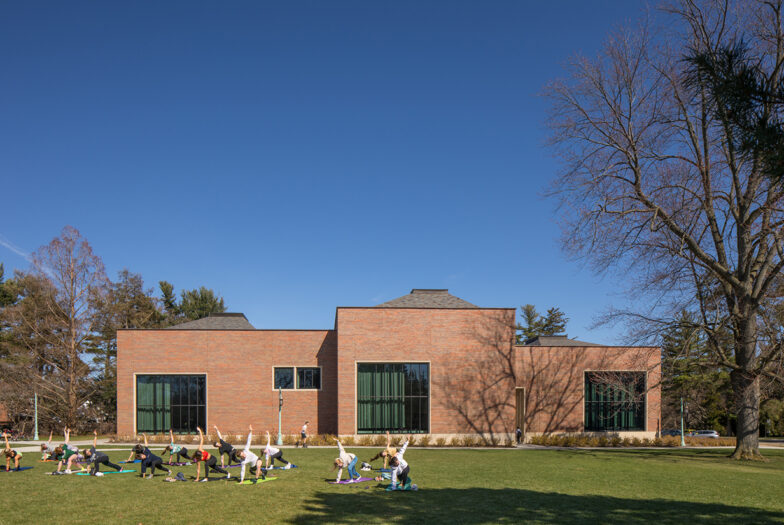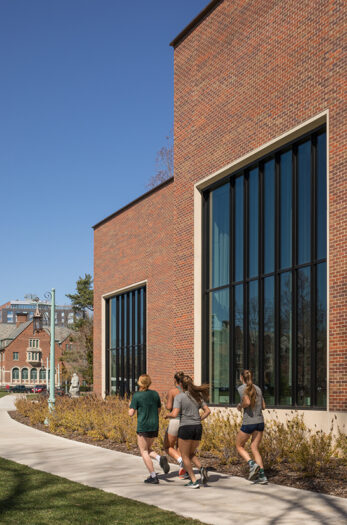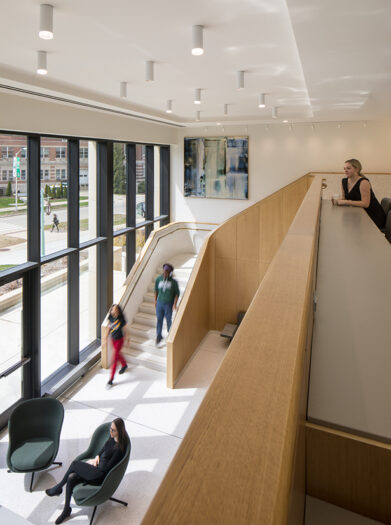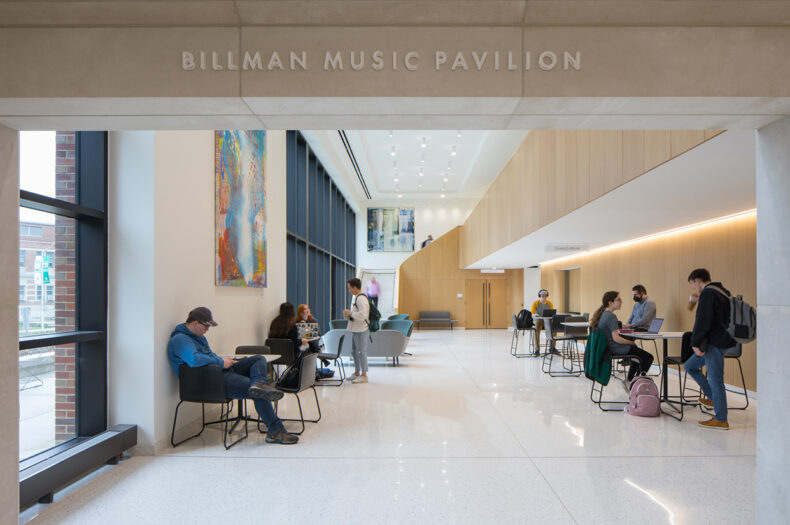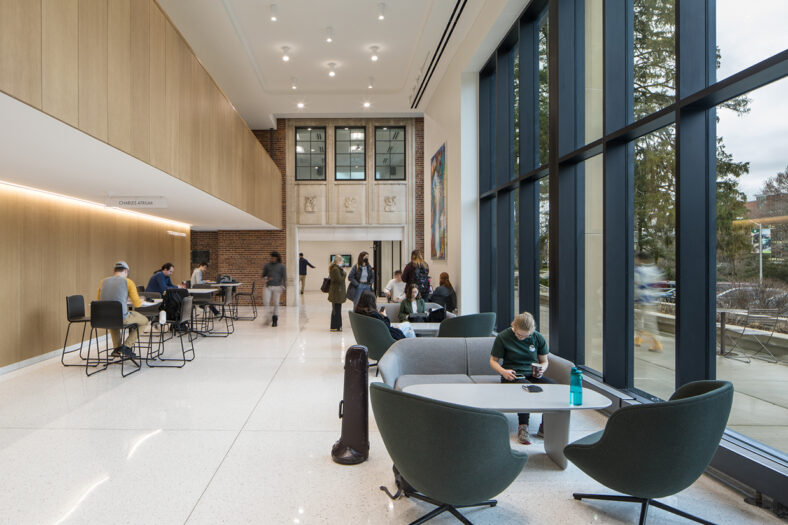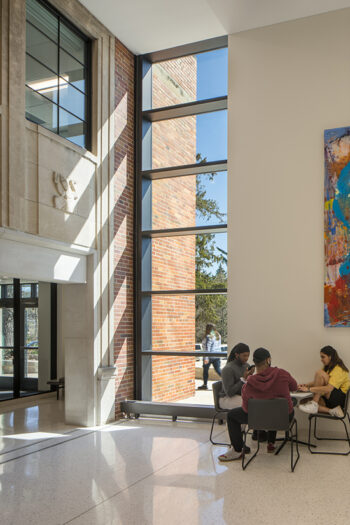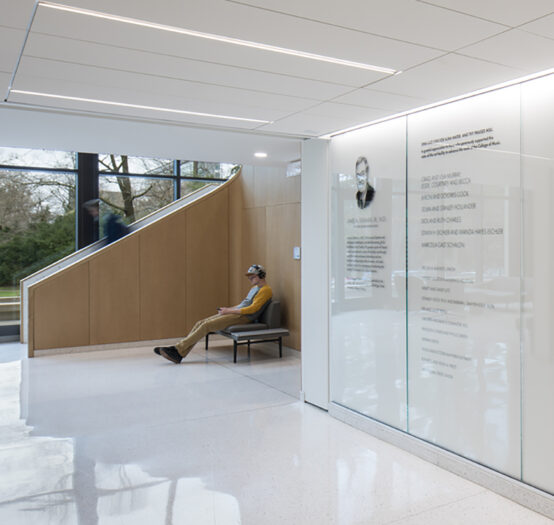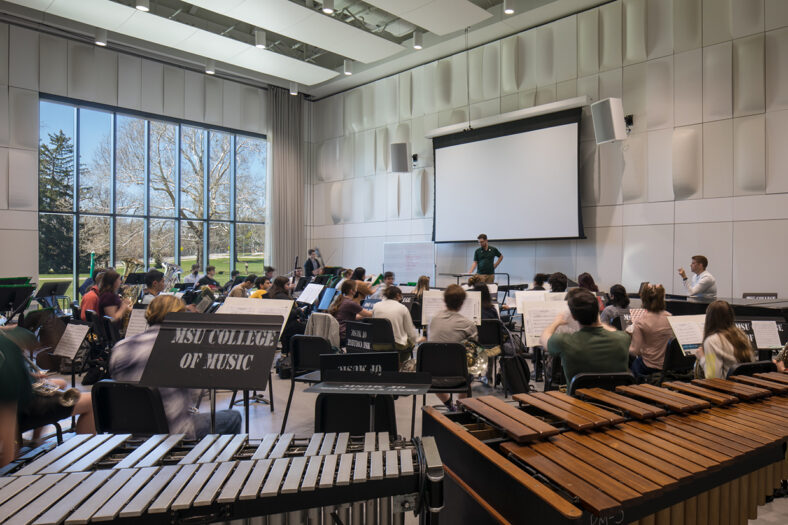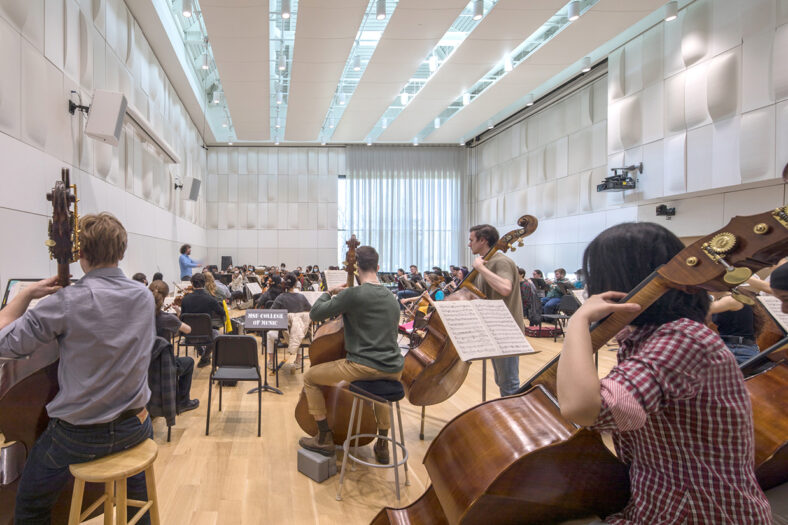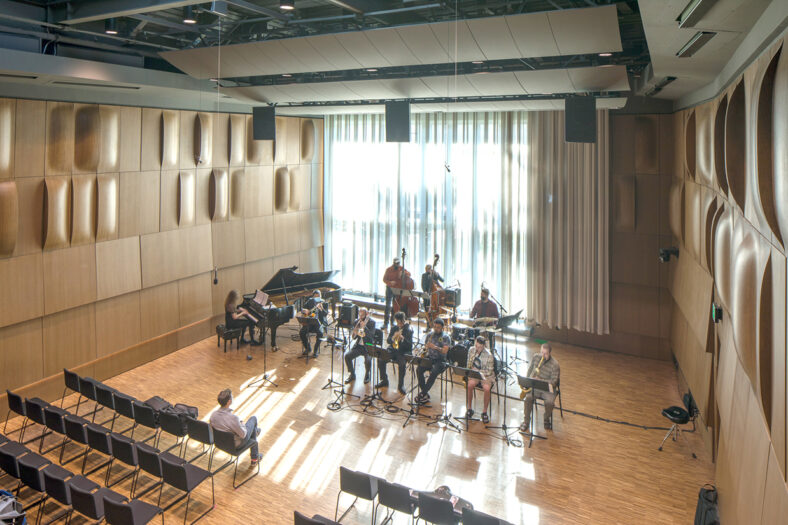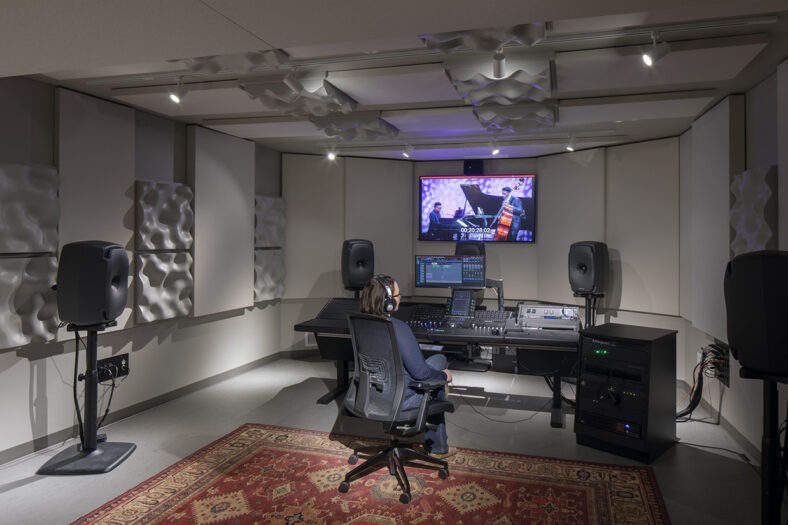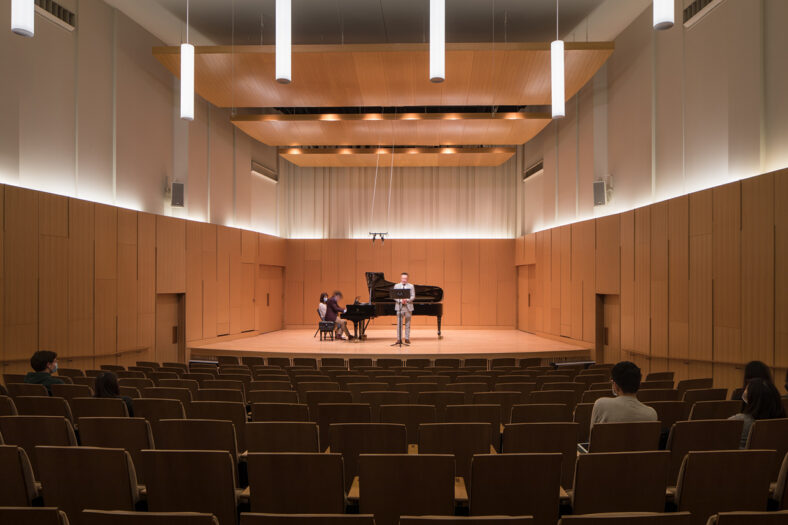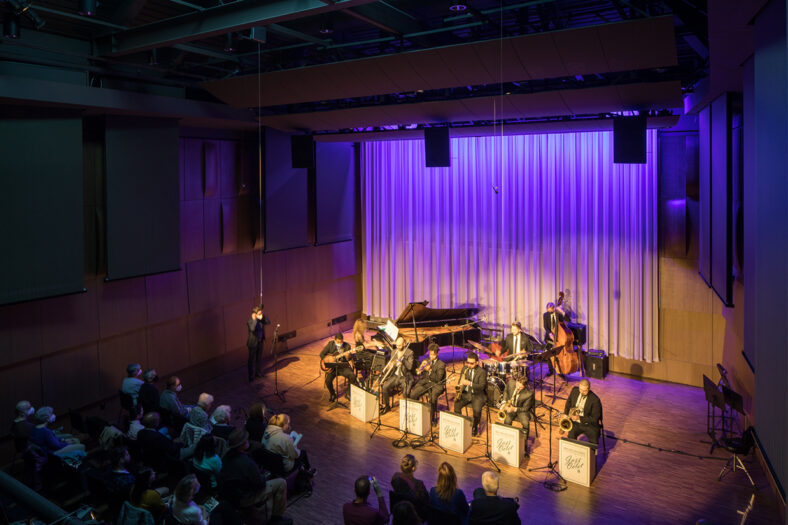Music can be both soothing and invigorating and often connects people with each other and their surroundings. Our team worked with Michigan State University to create a space that blends inspirational aesthetic with necessary function, expanding and renovating the College of Music’s Billman Music Pavilion to support the program’s growth.
As a leader in music education, MSU needed the existing 1940s facility to be refreshed to better meet 21st-century demands. Working closely with MSU, the design team envisioned and developed an updated space that features high-performance building systems, supports low-energy use, and utilizes high-durability materials and finishes. Understanding the College’s additional need to enhance the facility’s acoustics, large rehearsal spaces with displacement ventilation were designed to maintain acoustically compliant mechanical systems with very low airflow speeds, forced supply air, and passive return.
Understanding the importance of optimizing space and meeting program needs, the team created multi-use areas that didn’t compromise on primary function. For example, the jazz rehearsal room doubles as a jazz performance venue. We also sought to use materials responsibly and efficiently; the building’s oak wood doors and panels utilize a reconstituted engineered species mix. The design offers musicians three large rehearsal rooms with total acoustic isolation via floating floors and decoupled concrete walls; custom acoustic panels line the walls among forty-five new practice rooms, nine faculty studios, and a new recording control suite.
The interior is filled with natural daylight, specifically in the new rehearsal rooms, with each of those spaces featuring a skylight aperture and generous glazing. This has resulted in minimal artificial lighting needed during daytime classes. Additionally, by accommodating the strict footprint next to the historically significant Adams Field, musicians inside the building can find inspiration from the serene view of the historic campus landscape.
The addition matches the existing structure in scale, form, and material, but also reveals a contemporary approach with spare details and generous glazing. As a result, MSU has an updated, inspiring space for music education and performance.
